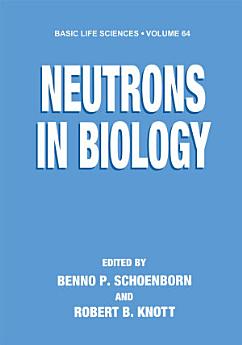Neutrons in Biology
Benno P. Schoenborn · Robert B. Knott
Dec 2012 · Basic Life Sciences Book 64 · Springer Science & Business Media
Ebook
452
Pages
reportRatings and reviews aren’t verified Learn More
About this ebook
This compendium presents some of the major applications of neutron scattering techniques to problems in biology. It is a record of the papers presented at the Neutrons in Biology Conference, the third in an occasional series held to highlight progress in the field and to provide a focus for future direction. The strength ofthe neutron scattering technique remains principally in the manipula tion of scattering density through hydrogen and deuterium atoms. The development ofad vanced detectors, innovative instrument and beamline components, and sophisticated data acquisition systems through the 1970s and early 1980s provided a sound foundation for the technique. With continued development, some of the exotic and expensive equipment has become affordable by the medium-sized facilities, thereby broadening the user base considerably. Despite problems with the major neutron sources in the late 1980s and early 1990s, some spectacular results have been achieved. Whilst the high and medium flux beam reac tors will continue to make a major impact in the field, the results from the first experi ments, and the planned developments on spallation neutron sources, clearly indicate that the technique has enormous potential.
Rate this ebook
Tell us what you think.
Reading information
Smartphones and tablets
Install the Google Play Books app for Android and iPad/iPhone. It syncs automatically with your account and allows you to read online or offline wherever you are.
Laptops and computers
You can listen to audiobooks purchased on Google Play using your computer's web browser.
eReaders and other devices
To read on e-ink devices like Kobo eReaders, you'll need to download a file and transfer it to your device. Follow the detailed Help Center instructions to transfer the files to supported eReaders.









